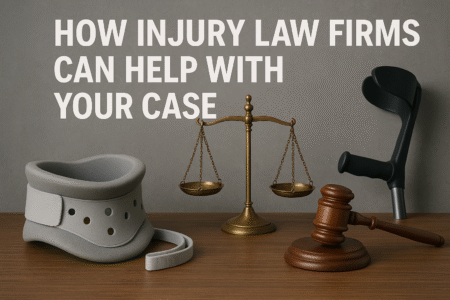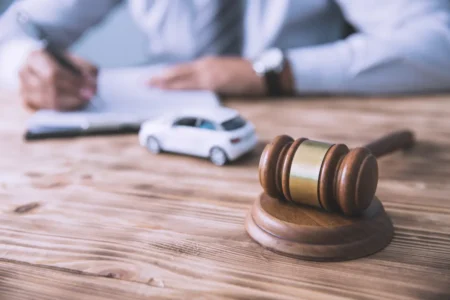Accidents involving slips and falls happen when someone trips, falls, or slips on someone else’s property that presents a risk. These incidents can happen anywhere, including sidewalks, grocery stores, and private homes.
Common injuries from slip and fall accidents include sprains, fractures, and head injuries. The severity of these injuries can lead to significant medical expenses and lost wages.
Understanding the liability in slip and fall cases is crucial. Property owners are often responsible for maintaining safe conditions for visitors, which may include regular inspections and prompt repairs.
Recognizing your rights and potential compensation is essential for anyone injured in a slip and fall incident. Consulting with a legal expert can provide guidance on the next steps.
Slip and Fall Lawsuit: When to Consider Legal Action
Consider legal action if you’ve sustained injuries from a slip and fall accident due to another party’s negligence. This includes instances where the property owner knew about a hazardous condition but failed to address it.
If you face substantial medical bills or lost wages due to your injuries, pursuing a lawsuit may be a viable option. Legal action can help recover these costs and secure compensation for pain and suffering.
Documenting the accident thoroughly can support your claim. This includes taking photographs of the scene, collecting witness statements, and obtaining medical records related to your injuries.
Lastly, consulting an attorney who specializes in personal injury law can help determine if you have a strong case and guide you through the legal process.
Typical Reasons for Falls and Slips
Slip and fall incidents can result from various hazardous conditions, including:
- Wet Floors: Spills, leaks, or cleaning can create slippery surfaces.
- Uneven Surfaces: Cracks, potholes, or uneven pavement can pose tripping hazards.
- Poor Lighting: Fall risk might be elevated by dangers that are not well lit.
- Obstructed Walkways: Clutter, debris, or improper placement of furniture can create obstacles.
The following table summarizes common causes of slip and fall incidents:
| Cause | Description |
| Wet Floors | Liquids that create slippery surfaces |
| Uneven Surfaces | Cracks or bumps on sidewalks or floors |
| Poor Lighting | Insufficient lighting in walkways or stairs |
| Obstructed Walkways | Items blocking pathways or walkable areas |
Identifying the specific cause of a slip and fall accident is essential for determining liability and pursuing compensation.
How to Build a Strong Slip and Fall Lawsuit Case
Building a strong slip and fall lawsuit case requires thorough preparation. Start by gathering evidence, including photographs of the accident scene, witness statements, and maintenance records of the property.
Document your injuries and medical treatment meticulously. This includes keeping medical bills, treatment plans, and any correspondence with healthcare providers.
Consulting with an attorney early in the process can help clarify legal requirements and necessary documentation. They can assist in collecting expert testimony if needed.
Finally, ensure that all evidence is organized and presented clearly to support your claim effectively. A well-prepared case can significantly influence the outcome of your lawsuit.
The Role of Negligence in Slip and Fall Lawsuits
Negligence is a critical element in slip and fall lawsuits. To establish negligence, you must demonstrate that the property owner failed to maintain a safe environment.
The legal standard requires proving that the owner knew or should have known about the hazardous condition. This includes showing that reasonable steps were not taken to fix or warn about the danger.
Additionally, you must prove that this negligence directly caused your injuries. Establishing a clear link between the property owner’s failure and your accident is crucial for a successful claim.
Understanding the nuances of negligence can significantly impact the direction of your case. Consulting a legal expert can provide guidance on building your argument effectively.
Slip and Fall Lawsuit: What Types of Compensation Can You Claim?
Accident victims who slip and fall may be entitled to a variety of compensation, such as:
- Medical Expenses: Coverage for current and future medical treatments related to your injuries.
- Lost Wages: Recompense for lost wages resulting from time away from work during the healing process.
- Pain and Suffering: Damages for diminished quality of life, mental distress, and bodily discomfort.
Additional compensation may also include rehabilitation costs and expenses for any required assistive devices, such as crutches or wheelchairs.
Discussing potential compensation with your attorney can help determine what you may be entitled to based on your specific circumstances.
The Importance of Evidence in a Slip and Fall Case
Evidence plays a vital role in the success of a slip and fall case. Collecting and preserving evidence immediately following the accident can strengthen your claim.
Key types of evidence include:
- Photographs: Images of the accident scene, showing the hazardous condition.
- Witness Statements: Quotes from witnesses to the accident along with contact information.
- Medical Records: Documentation of your injuries and treatments received.
In addition to physical evidence, expert testimony from safety professionals can further support your case. Expert witnesses can provide insight into industry standards for property maintenance.
Strong evidence is essential for proving negligence and securing the compensation you deserve.
What to Expect During a Slip and Fall Lawsuit Process
The slip and fall lawsuit process can be complex and lengthy. Initially, your attorney will file a complaint in the appropriate court, outlining your claims and the damages sought.
Once the complaint is filed, the defendant will respond, and both parties will enter the discovery phase. During discovery, each side gathers evidence, including documents and witness testimonies.
Mediation or settlement discussions may occur during or after the discovery phase.
If a settlement cannot be reached, your case may proceed to trial, where both sides present their arguments. The outcome will depend on the evidence presented and the jury’s decision.
Statute of Limitations for Filing a Slip and Fall Lawsuit
The statute of limitations for filing a slip and fall lawsuit varies by state but typically ranges from 1 to 3 years from the date of the accident.
Failing to file your lawsuit within this timeframe can result in losing your right to pursue legal action. It is crucial to be aware of the specific deadlines in your jurisdiction.
In some cases, exceptions may apply, such as when the injured party is a minor or if the injury was not immediately apparent. Consulting an attorney can help clarify these details.
Understanding the statute of limitations is essential for timely action in pursuing your claim and ensuring you don’t miss critical deadlines.
Choosing the Right Attorney for Your Slip and Fall Case
Selecting the right attorney is vital for the success of your slip and fall case. Look for an attorney who specializes in personal injury and has experience with slip and fall lawsuits.
Consider the following factors when choosing an attorney:
- Experience: An attorney with a proven track record in slip and fall cases.
- Reputation: Look for reviews and testimonials from past clients.
- Communication: Choose an attorney who communicates clearly and is accessible for questions.
Schedule initial consultations with potential attorneys to discuss your case and gauge their expertise. A good attorney will help navigate the legal process and advocate effectively on your behalf.
Common Defenses Used in Slip and Fall Lawsuits
Defendants in slip and fall lawsuits often use various defenses to reduce liability. Common defenses include:
- Comparative Negligence: Arguing that the injured party contributed to the accident, which can reduce the compensation awarded.
- Lack of Notice: Claiming that the property owner was unaware of the hazardous condition and therefore cannot be held liable.
- Open and Obvious Danger: Asserting that the hazard was obvious, and the injured party should have avoided it.
Understanding these defenses can help you prepare for potential arguments against your claim. Working with an experienced attorney can strengthen your case and counter these defenses effectively.
Preventing Slip and Fall Accidents: Tips for Property Owners
Property owners play a crucial role in preventing slip and fall accidents. To enhance safety, they should regularly inspect their premises for hazards and promptly address any issues.
Here are some essential tips for property owners:
- Maintain Clear Walkways: Remove debris and ensure pathways are well-lit and unobstructed.
- Properly Mark Hazards: Use clear signage to warn about slippery surfaces or uneven ground.
- Regular Maintenance: Repair any damaged flooring or pavement to prevent tripping hazards.
Implementing these measures can reduce the likelihood of accidents and protect visitors from injury. Property owners should prioritize safety to create a secure environment for everyone.
Frequently Asked Questions (FAQs)
What is a slip and fall lawsuit?
A slip and fall lawsuit is a legal claim filed by an individual who has been injured due to slipping, tripping, or falling on someone else’s property due to hazardous conditions.
When should I consider filing a slip and fall lawsuit?
Consider filing a lawsuit if you’ve sustained injuries due to negligence, such as wet floors or uneven surfaces, and if your medical expenses and lost wages are significant.
What types of compensation can I receive from a slip and fall lawsuit?
You may be eligible for compensation covering medical bills, lost wages, pain and suffering, and rehabilitation costs related to your injuries.
How long do I have to file a slip and fall lawsuit?
The statute of limitations for filing a slip and fall lawsuit typically ranges from 1 to 3 years, depending on your state, so it’s important to act promptly.
What evidence is needed to support a slip and fall lawsuit?
Essential evidence includes photographs of the accident scene, witness statements, medical records, and any relevant maintenance records from the property owner.
How do I prove negligence in a slip and fall case?
To prove negligence, you must demonstrate that the property owner failed to maintain a safe environment, knew about the hazard, and that this negligence directly caused your injuries.
What should I do immediately after a slip and fall accident?
After a slip and fall accident, seek medical attention for your injuries, report the incident to the property owner, gather evidence, and consult with a personal injury attorney to discuss your options.




